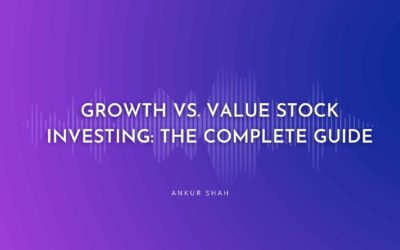How to Use Stock Screeners Effectively
Stock screeners are invaluable tools that allow investors to filter through thousands of shares to identify potential investment opportunities.
With just a few clicks, share screeners enable you to screen for stocks based on specified fundamental, technical, or quantitative criteria.
What is a Stock Screener?
A stock screener acts like a funnel, taking in the universe of stocks and narrowing them down to a manageable list of shares that meet your customised screening requirements.
Why Use a Stock Screener?
The key benefit of stock selection tools is they save investors an incredible amount of time and effort.
Rather than analysing stocks one by one, you can use screeners to rapidly filter stocks based on key metrics.
Screeners allow you to screen for stocks based on quantitative factors like valuation ratios, growth rates, profitability margins and more.
You can also filter for technical indicators like moving average crossovers or price momentum.
Additionally, selection tools enable qualitative screening based on sector, industry, market cap and other financial categories.
The end result is a customised, filtered list of stocks that have characteristics aligned with your investing strategy and criteria.
While screening alone should not drive investment decisions, it provides a fantastic starting point for further research and due diligence.
Screeners allow you to highlight opportunities you may have otherwise missed in the vast universe of shares.
With the ability to save screened lists, set alerts, and export data, share screeners can become a robust and invaluable part of an investor’s toolkit.
Their versatility and customization enables investors of all styles to enhance their research process.
Used properly, stock screeners can provide a key idea generation advantage for your investing strategy.
Consistent Compounding – Screening for warren buffet stocks
Choosing a stock screener
When it comes to choosing a equity screener, investors are spoiled for choice. There are numerous powerful selection tools available, both free and paid, so it’s important to consider which one best fits your needs.
Popular Screening Platforms
Here are some of the most popular stock screening platforms:
Finviz –
Offers a free share screener with dozens of filters for fundamentals, valuation, technicals and more. Screens over 8,000 US stocks and ETFs. Provides charting and export options.
TradingView –
Free advanced charting with ability to screen over 60,000 instruments including shares, forex and cryptocurrencies. Can screen based on technical indicators.
Thinkorswim –
TD Ameritrade’s powerful trading platform includes a equity screener to filter over 10,000 shares and options. Advanced screening for fundamentals and technicals.
Yahoo Finance –
Free basic share selection tools capability with over 25 filters for key ratios and technicals. Covers US, Canada, UK and Australia stocks.
Stock Rover –
Paid platform ($9-39/month) with robust screening focused on fundamentals. Filters over 10,000 stocks and ETFs. Filter testing and charting.
The best stock screeners provide hundreds of screening criteria, cover global markets, are updated in real-time, offer intuitive and flexible interfaces, have screen optimization and alert capabilities, seamlessly integrate charts, and provide all this functionality for free or at a very low cost.
With free yet powerful selection tools like Finviz and TradingView, most individual investors are able to find excellent equity screening capabilities without significant expense.
The key is identifying the platform that best matches your specific screening process and philosophy.
Setting Up Your Screen
How to Set Up a Screen Step-by-Step
Setting up a stock screener is straightforward once you understand the basic process. Let’s walk through a step-by-step guide using Finviz as an example:
Access the stock screener tool. For Finviz, this is the share selection tools tab at the top.
Select the region and market. For US shares, choose “USA” and the “NASDAQ + NYSE + AMEX” exchanges.
Consistent Compounding – The Day that saved my career
Add filtering criteria using the available filters on the left. For fundamentals, you can screen by valuation (P/E, P/B), financial health (current ratio, debt/equity), profitability (margins) and more.
Add technical indicator filters if desired. Options include moving averages, RSI, MACD crossover and many others.
Screen for specific sectors, industries, market caps or other categories in the dropdown menus above filters.
Choose to screen for stocks, ETFs, forex or cryptocurrencies. Adjust date range if needed.
Click the yellow “Screen Stocks” button to run the scanner. Filtered results will populate on the screener page.
Tips for Choosing Filter Criteria
When setting filters, less is often more. Start with 2-3 key criteria that are most important for your strategy.
You can always add more filters to narrow results. It’s also smart to test different variations of criteria to see what yields optimal results.
The best screens use high-conviction filtering rules.
Key Filtering Criteria for Stock Screening
When screening stocks, applying filters across fundamentals, technicals and valuations is an effective approach. Here are some of the most common and useful filtering criteria to consider:
Fundamental Metrics to Screen For
P/E Ratio – Price/earnings ratio is a basic valuation metric. Screen for low P/E shares or stocks with P/E below the industry average.
EPS Growth – Earnings per share growth provides insight into profitability trends. Look for EPS growth exceeding 20-30%.
Dividend Yield – Dividend-paying stocks offer regular income. Filter for yields above 2-4%.
Check out – How does stock market work
Technical Indicators to Use
Volume – Trading volume indicates investor interest. Look for increasing volume over the past month.
RSI – Relative strength index measures momentum. Screen for RSI below 30 (oversold) or above 70 (overbought).
Moving Averages – Crossovers signal momentum shifts. Use 50 and 200-day moving averages.
Important Valuation Ratios
P/B Ratio – Price/book ratio gauges valuation versus book value. Filter for low P/B stocks.
PEG Ratio – P/E divided by EPS growth rate. Lower PEG indicates undervaluation.
In addition to common criteria like these, also consider tailoring your screener strategy to your investing goals.
Growth investors may prioritise EPS growth, while value investors focus on P/E and P/B.
Add criteria to screen for small-cap shares, technical chart patterns, undervalued dividend payers, or other factors important to you.
The power of stock screeners lies in their flexibility to refine a universe of stocks precisely matching your strategy.
Try creative screening rules – the right criteria can unlock hidden investing opportunities.
Backtesting and Optimising Your Screener
One of the most important steps after setting up your stock screener is to backtest it.
Backtesting involves running your screening criteria over historical time periods to see how the selected stocks would have performed.
This enables you to evaluate and optimise your criteria before putting real money at stake.
The key is to analyse the historical performance of the shares flagged by your selection tools.
Know more – How to use Stock Screener
Some questions to ask:
Does the screening strategy outperform the broader market historically?
Do the picks consistently beat sector and industry averages?
How do the picks rank on risk-adjusted returns metrics like the Sharpe ratio?
Is the hit rate of successful picks over 50% historically?
If the backtest shows your selection tools strategy underperforms or has excessive volatility, tweak the criteria.
For example, tighten valuation filters, add quality factors like profitability margins, or apply technical filters like moving average crossovers.
The goal is to refine your share screening criteria until the backtest results are consistently strong.
With robust backtesting and optimization, you can avoid false positives – stocks that appear attractive from the filter criteria but have poor risk-adjusted returns.
Backtesting takes screening from a theoretical exercise to a data-driven, quantitative investing strategy.
While share screening involves some art in choosing criteria, optimising your screener using historical testing and data injects an element of science into the process.
This evidence-based approach leads to screens that are refined, robust, and tailored to your investing style and risk profile – ultimately giving you an edge in the markets.
Check out – Electric Vehicle Shares in India
Interpreting and Acting on Results
Once your stock screener generates a filtered list of stocks, the real work begins in analysing the output and digging deeper. Here are some tips for interpreting and acting on screener results:
Scan for standouts –
Look for stocks that rank favourably across multiple metrics like valuation, growth, profitability. Shares appearing in the top 20-30 screened results often warrant a closer look.
Research fundamentals –
Review financial statements, valuation models, analyst estimates and SEC filings for promising names. Assess the company’s competitive position in its industry.
Read latest news –
Check for recent earnings reports, guidance, product launches, acquisitions, lawsuits and management changes that may impact share direction.
Review technical charts –
Analyse price action, trends, support/resistance levels, trading volume and technical indicators for the stocks.
Create watchlists –
Add interesting names to curated watchlists in your brokerage platform to monitor them over time. Set price alerts.
Be selective –
Resist the urge to overtrade on screener results. Utilise screens to narrow down opportunities, not provide outright signals.
Consistent Compounding – Share Price Always Follows Fundamentals
Diversify picks –
Choose stocks across various sectors and market caps that offer an attractive risk/reward profile tailored to your portfolio goals.
The equity screening process invites analysis paralysis with hundreds of results. Focus on shares that rise above the noise based on thoughtful fundamental and technical review.
Allow your further diligence to identify the true opportunities worth investing in from the initial screener output.




